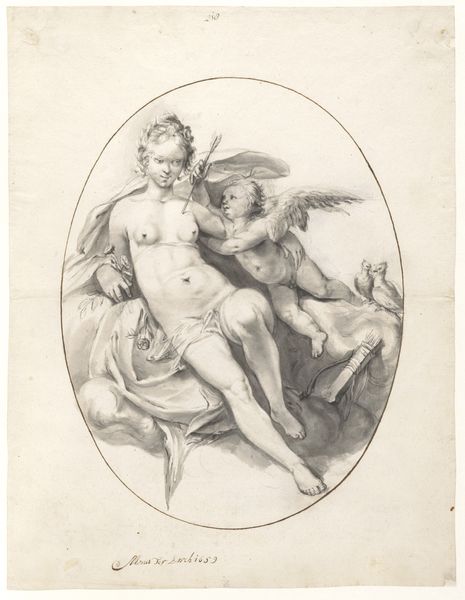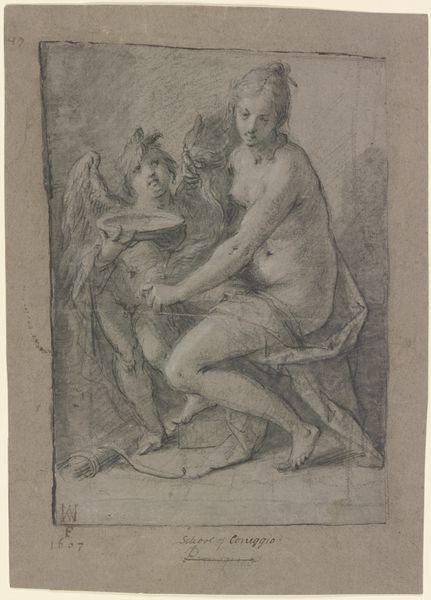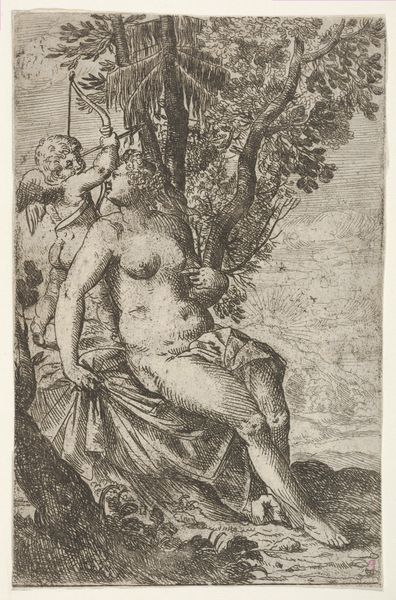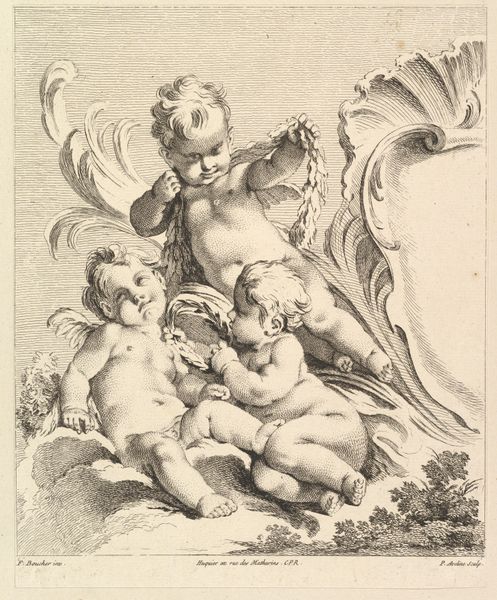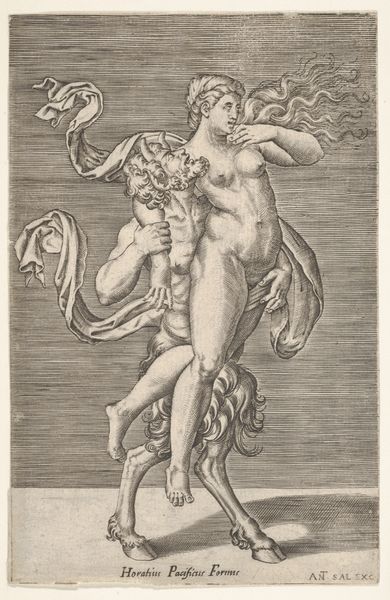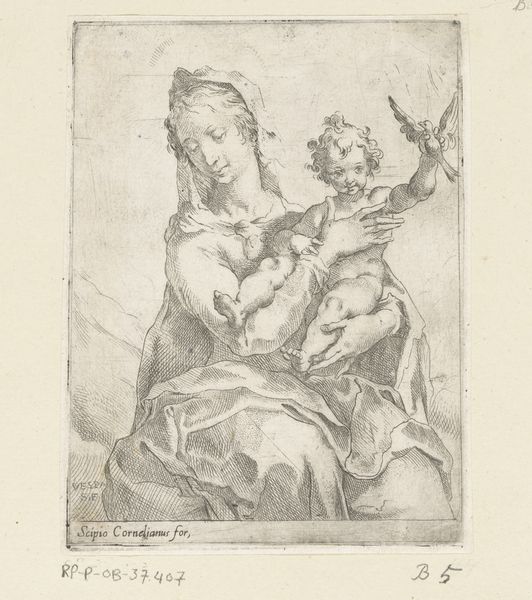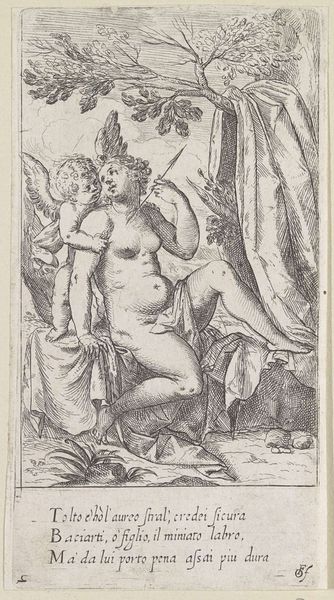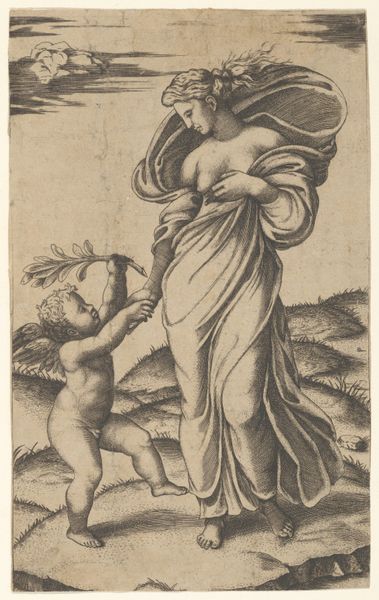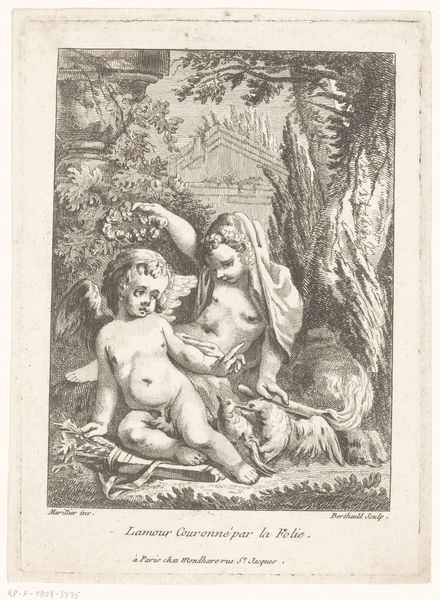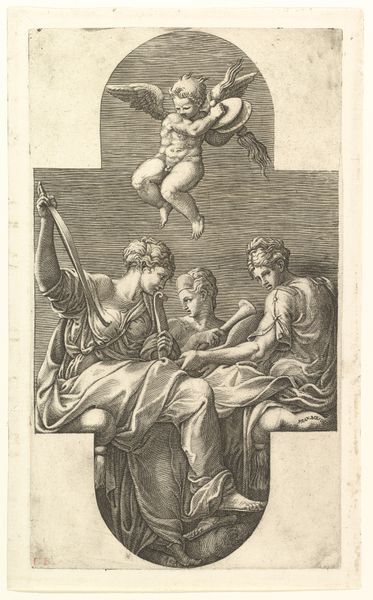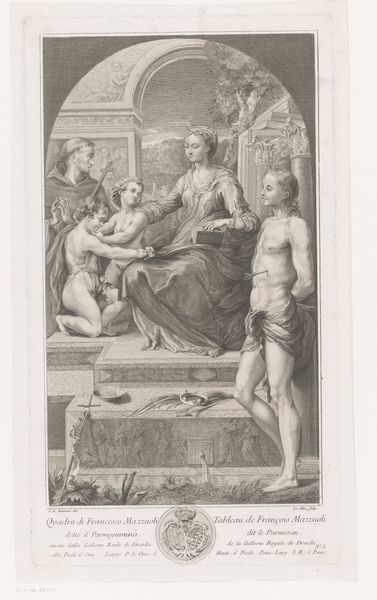
Lunet met Caritas en een vrouwelijke personificatie met zwaard en passer 1635 - 1660
0:00
0:00
engraving
#
allegory
#
baroque
#
old engraving style
#
caricature
#
figuration
#
line
#
history-painting
#
engraving
Dimensions: height 410 mm, width 222 mm
Copyright: Rijks Museum: Open Domain
Curator: This engraving, created sometime between 1635 and 1660, is entitled "Lunet met Caritas en een vrouwelijke personificatie met zwaard en passer," attributed to Giovanni Cesare Testa. What strikes you first about this composition? Editor: Well, immediately the materiality jumps out. Look at the fineness of the lines in this engraving—it must have taken incredible precision. There's almost a velvety texture created with just ink on paper. The subject feels almost secondary to the virtuosity of the process itself. Curator: Absolutely. And, the allegorical subject plays heavily into its context. Caritas, or Charity, is prominently featured, flanked by another female figure holding a sword and a pair of compasses. This piece participates in a long tradition of personifying abstract concepts. Editor: These symbols… the sword and compass alongside Caritas… how do those objects impact your historical interpretation? I mean, Caritas is often associated with nurturing and selflessness. Do those other symbols augment or challenge that familiar meaning in this engraving? Curator: It presents a complex vision of civic virtue. The sword alludes to Justice, while the compass suggests prudence and measured action. The print may reflect the influence of Baroque-era thinking in which rulers must blend strength, compassion, and wisdom. Editor: I’m especially drawn to how the rendering highlights the social conditions and skills that give value to this object. Without expert craftspeople producing and reproducing such detailed work for dissemination, would these ideas even circulate widely in society? The technology shapes the message. Curator: A crucial point. Prints like these facilitated the spread of allegorical imagery and complex ideological messages. These types of artworks visually shaped contemporary society's ethical and philosophical understanding of how best to maintain their social institutions. Editor: Examining the technical skills and the labor involved really enriches our understanding of its time, beyond the symbolism of those objects. Curator: Indeed. By considering both its historical context and technical production, this engraving by Testa reveals complex aspects of 17th-century culture. Editor: I'll remember this particular piece, thanks to this dialogue! The close observation of materials really helped unlock this artwork’s complex messaging for me.
Comments
No comments
Be the first to comment and join the conversation on the ultimate creative platform.
